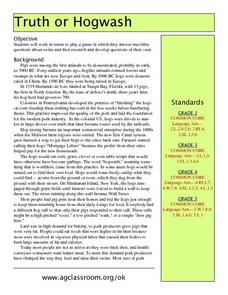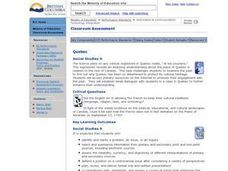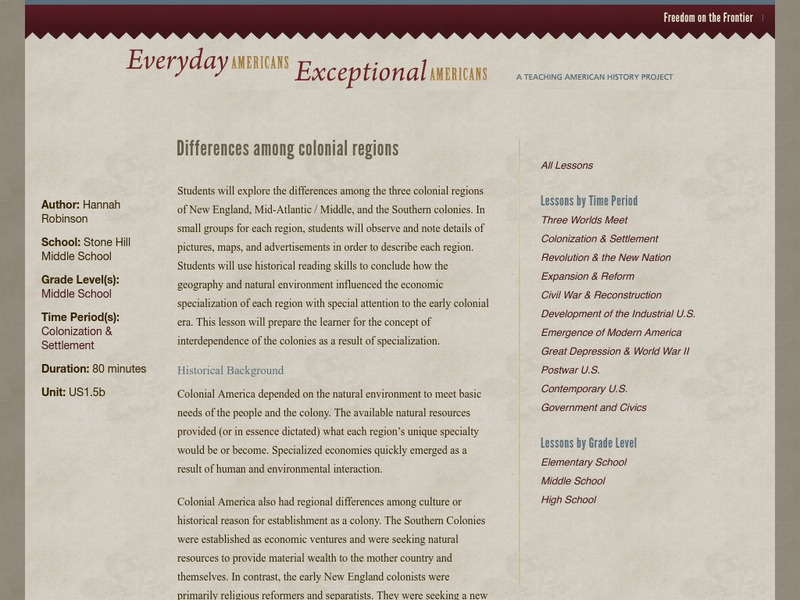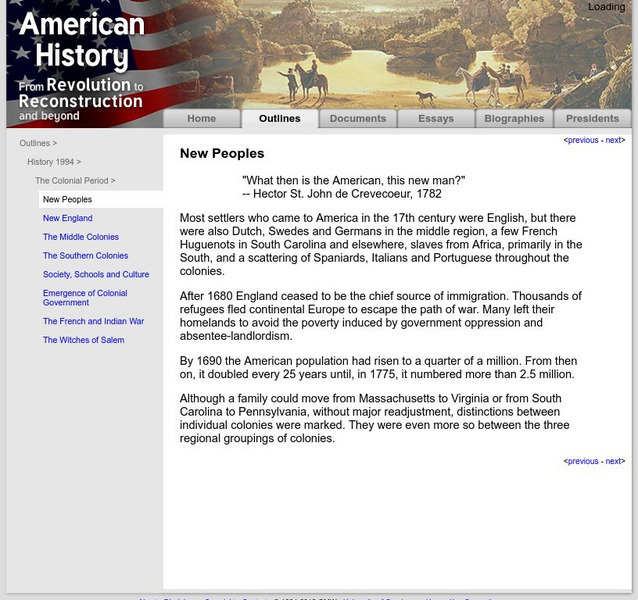Curated OER
Gandhi's Salt March, A Simulation
High schoolers examine Gandhi's Salt March. In this peace and tolerance lesson, students discuss the Salt Tax Levy that was imposed in India. High schoolers then debate how the Indian National Congress should have handled the issue.
Curated OER
Developing Flags
Students examine why having a symbol such as a flag is important for countries. In this flag lesson, students break into groups and create their own flag to represent their group dynamic.
Curated OER
Africans in Mexico
Students read case studies to examine the role of Africans in Mexico. Using maps, they research the areas that are discussed in the text and map out movement maps of Africans to and from Africa. They research the history of the Mexico...
Curated OER
Truth or Hogwash
Explore the history of domesticated pigs and their important byproducts. After discussing the use of pigs, class members create game boards describing the animals. While playing the game, they determine if the answers are true or...
Curated OER
From the Land, Of the Land: An Interdisciplinary Lesson on Indigenous People
Learners research the concept of indigenous people then write a diamante poem about them. They research online and use an online poem tool to create their poem.
Curated OER
Blessings of a Free Government: The Louisiana Purchase in 1803
Students may take part in a multitude of activities listed such as creating political cartoons, comparison papers, and creating a portfolio to reinforce concepts and ideas surrounding the Louisiana Purchase.
Curated OER
Quebec
Ninth graders to examine the past to find out why Quebec has been so determined to protect its cultural heritage. They access primary resources on the Internet to promote their engagement with the past.
George Mason University
Chnm: Differences Among Colonial Regions
Students will explore the differences among the three colonial regions of New England, Mid-Atlantic/Middle, and the Southern colonies. In small groups for each region, students will observe and note details of pictures, maps, and...
The History Cat
The History Cat: History of Colonial America: The Thirteen Colonies
Compares life in the three regions of the thirteen British colonies - the New England colonies (Massachusetts, New Hampshire, Rhode Island, and Connecticut), the Middle Colonies (New York, Pennsylvania, Delaware, and New Jersey), and the...
Library of Congress
Loc: Teachers: Geography and Its Impact on Colonial Life
Beginning with a discussion on how people adapt to or relocate to environments, this lesson encourages young scholars to explore why the Colonists settled in specific regions. In groups, students examine primary documents, analyzing...
Library of Congress
Loc: Geography and Its Impact on Colonial Life
European settlement patterns were influenced by geographic conditions such as access to water, harbors, natural protection, arable land, natural resources and adequate growing season and rainfall. Examine a variety of primary sources to...
Library of Congress
Loc: Geography and Its Impact on Colonial Life
European settlement patterns were influenced by geographic conditions such as access to water, harbors, natural protection, arable land, natural resources and adequate growing season and rainfall. Examine a variety of primary sources to...
McGraw Hill
Mc Graw Hill: Colonial Economy and Patterns of Society
Although tied to pages from a specific text, these AP study questions allow anyone to consider aspects of colonial economics. (Answers to some of the questions are located at the following link:...
Other
America Dept. Of State: Outline of American Literature [Pdf]
This online book presents an overview of American literature chronologically. Eras and movements are explained and biographies of significant authors are provided. This is a good way to understand the background and influences of...
ClassFlow
Class Flow: Thirteen Colonies
[Free Registration/Login Required] This flipchart includes information and maps of the original thirteen colonies and describes the characteristics of the three regions involved-- Northeast, Middle and Southern. Questions to check for...
University of Groningen
American History: Outlines: Second Generation of British Colonies
The religious and civil conflict in England in the mid-17th century limited immigration, as well as the attention the mother country paid the fledgling American colonies. In part to provide for the defense measures England was...
University of Groningen
American History: Outlines: New Peoples
Most settlers who came to America in the 17th century were English, but there were also Dutch, Swedes and Germans in the middle region, a few French Huguenots in South Carolina and elsewhere, slaves from Africa, primarily in the South,...
Curated OER
Educational Technology Clearinghouse: Maps Etc: Intercolonial Wars, 1689 1713
A map of eastern colonial North America showing the struggle for supremacy between England, France, and Spain in the region, from the King William's War (1689-1692) to Queen Anne's War (1702-1713), a period also known as the...
Curated OER
Etc: Maps Etc: The American Indian Nations, 1776
An early map of the southeastern North America around 1776, showing the American Indian Nations of the region at the time. The map shows colonial boundaries extending from the Atlantic coast to the Mississippi River, towns, forts, and...
Curated OER
Educational Technology Clearinghouse: Maps Etc: The Iroquois Country, 1768
A map of the Finger Lakes region of Upstate New York showing the Iroquois Six Nations lands as established by the Fort Stanwix treaty of 1768. The map show the expansion of English colonial settlers into the upper Hudson River Valley...















![America Dept. Of State: Outline of American Literature [Pdf] eBook America Dept. Of State: Outline of American Literature [Pdf] eBook](http://content.lessonplanet.com/resources/thumbnails/410155/large/bwluav9tywdpy2symdiwmduymc0yotc0ny0xzhf5cgiwlmpwzw.jpg?1589985629)


